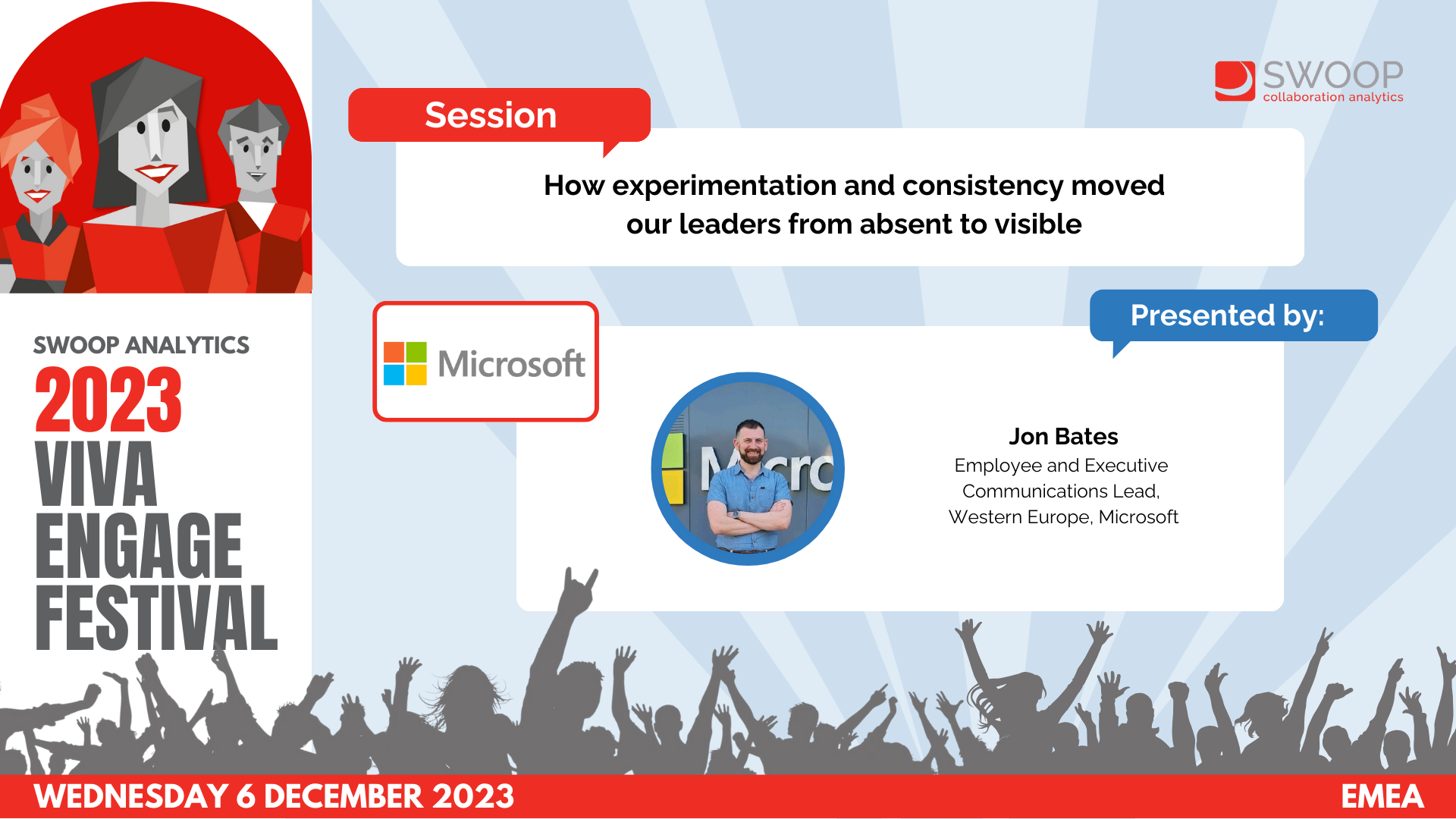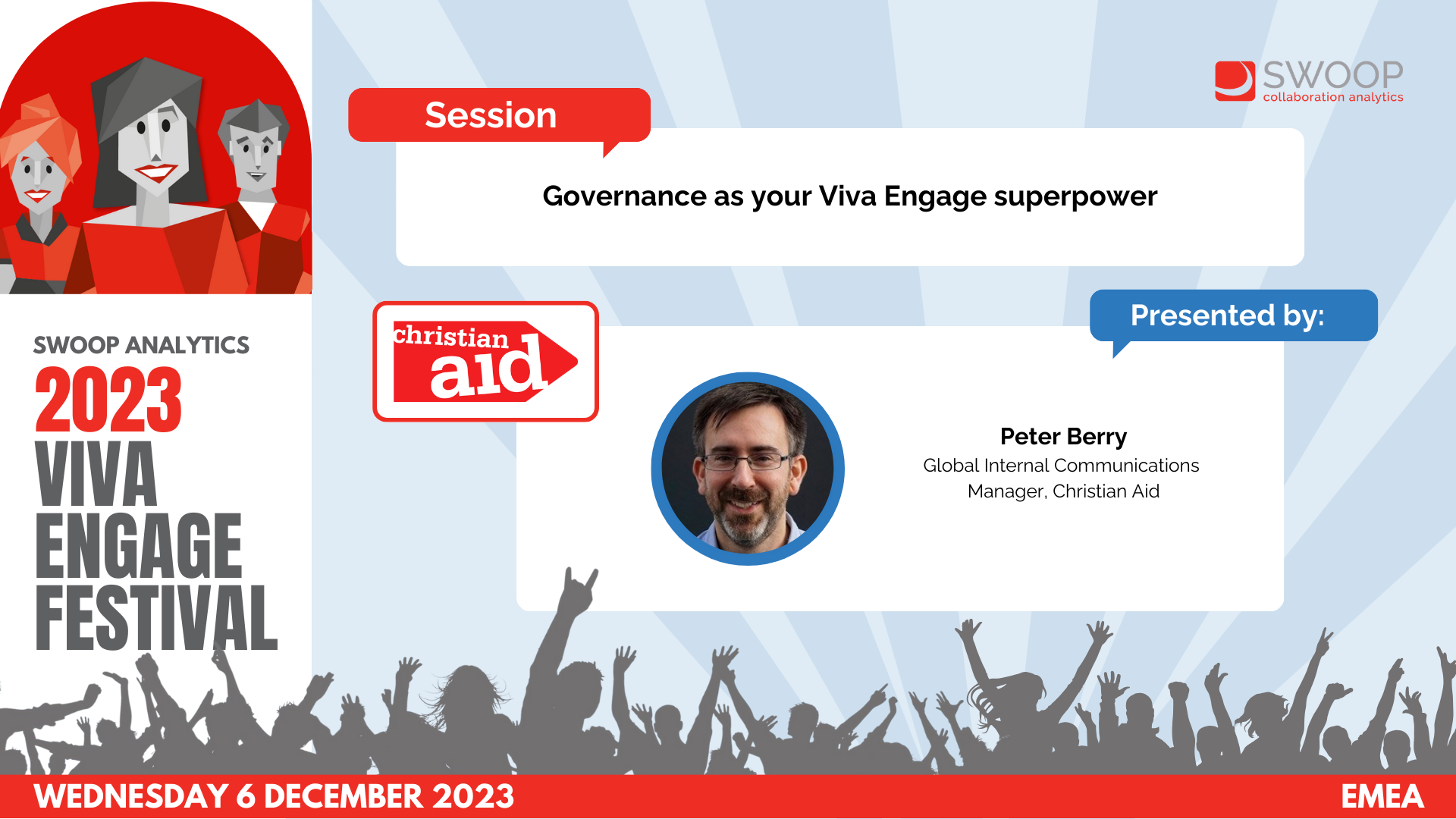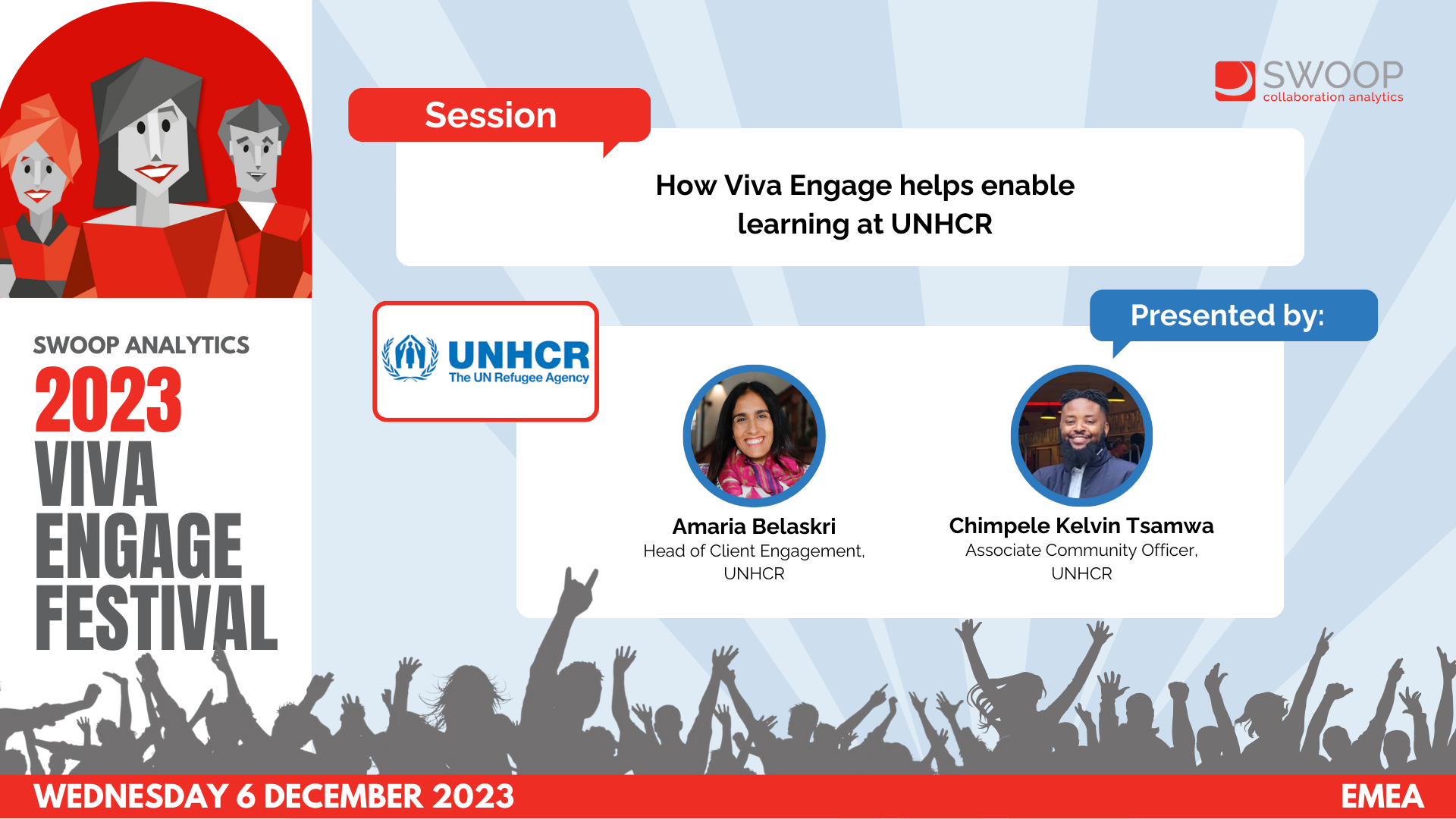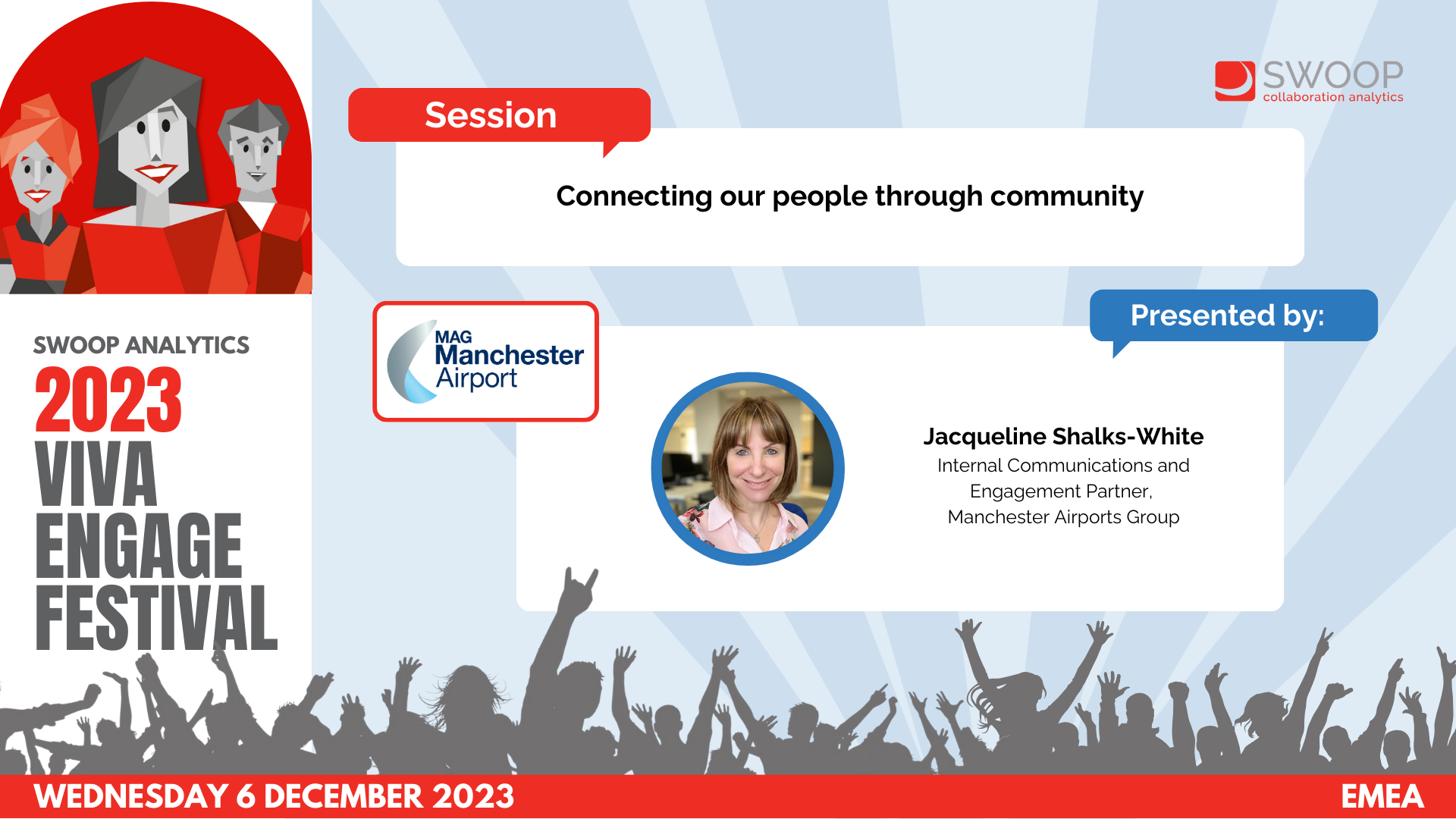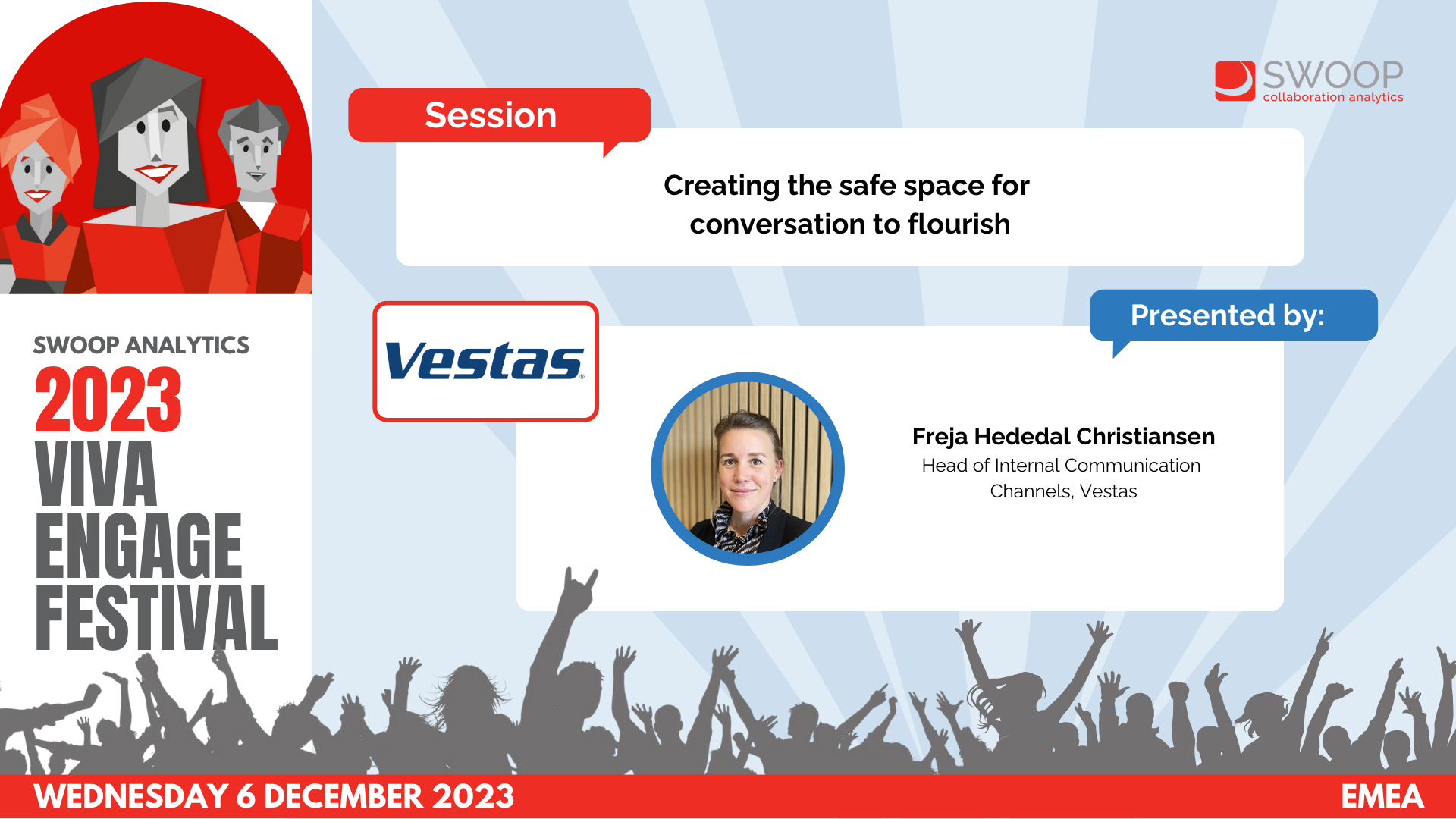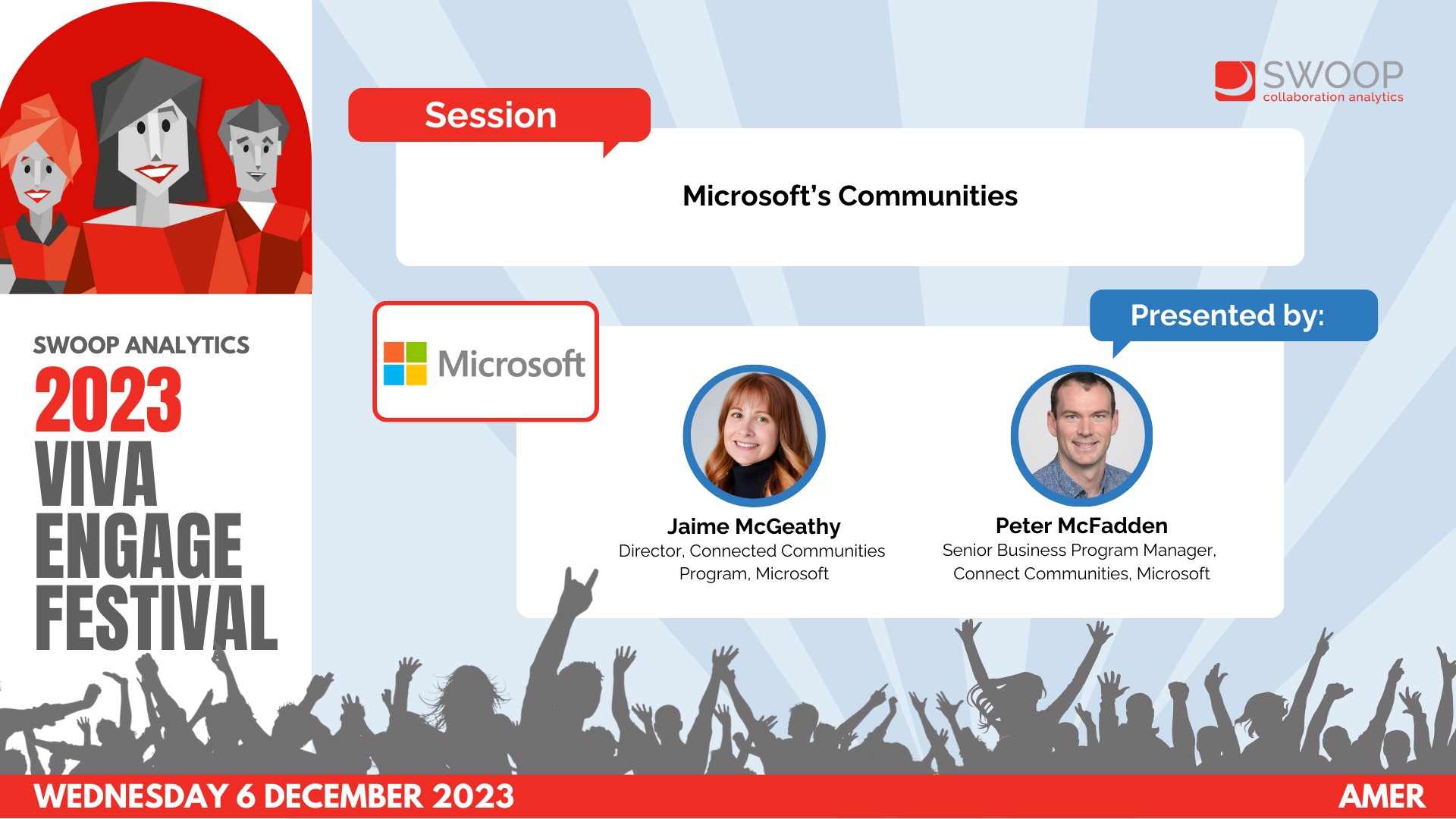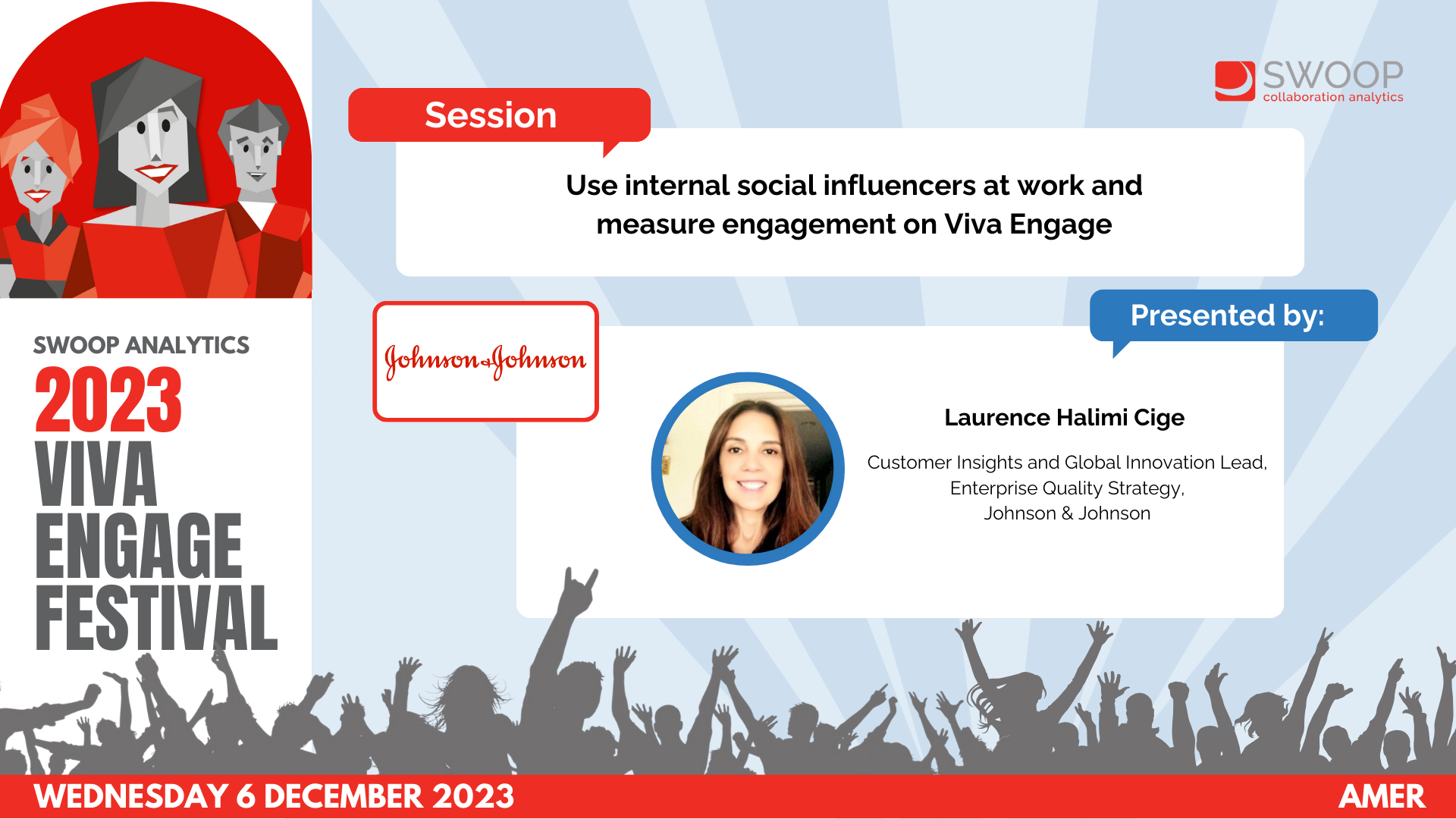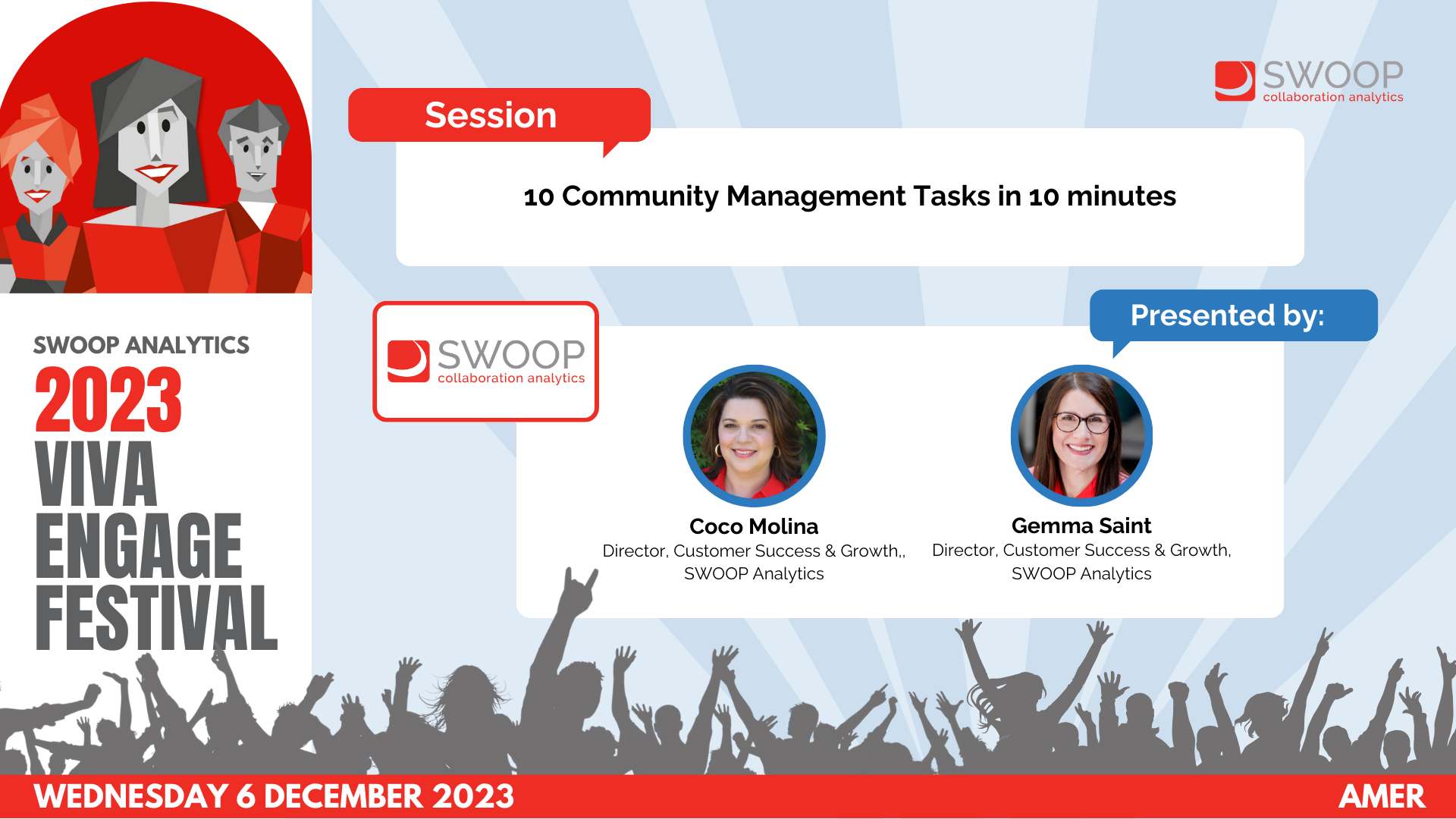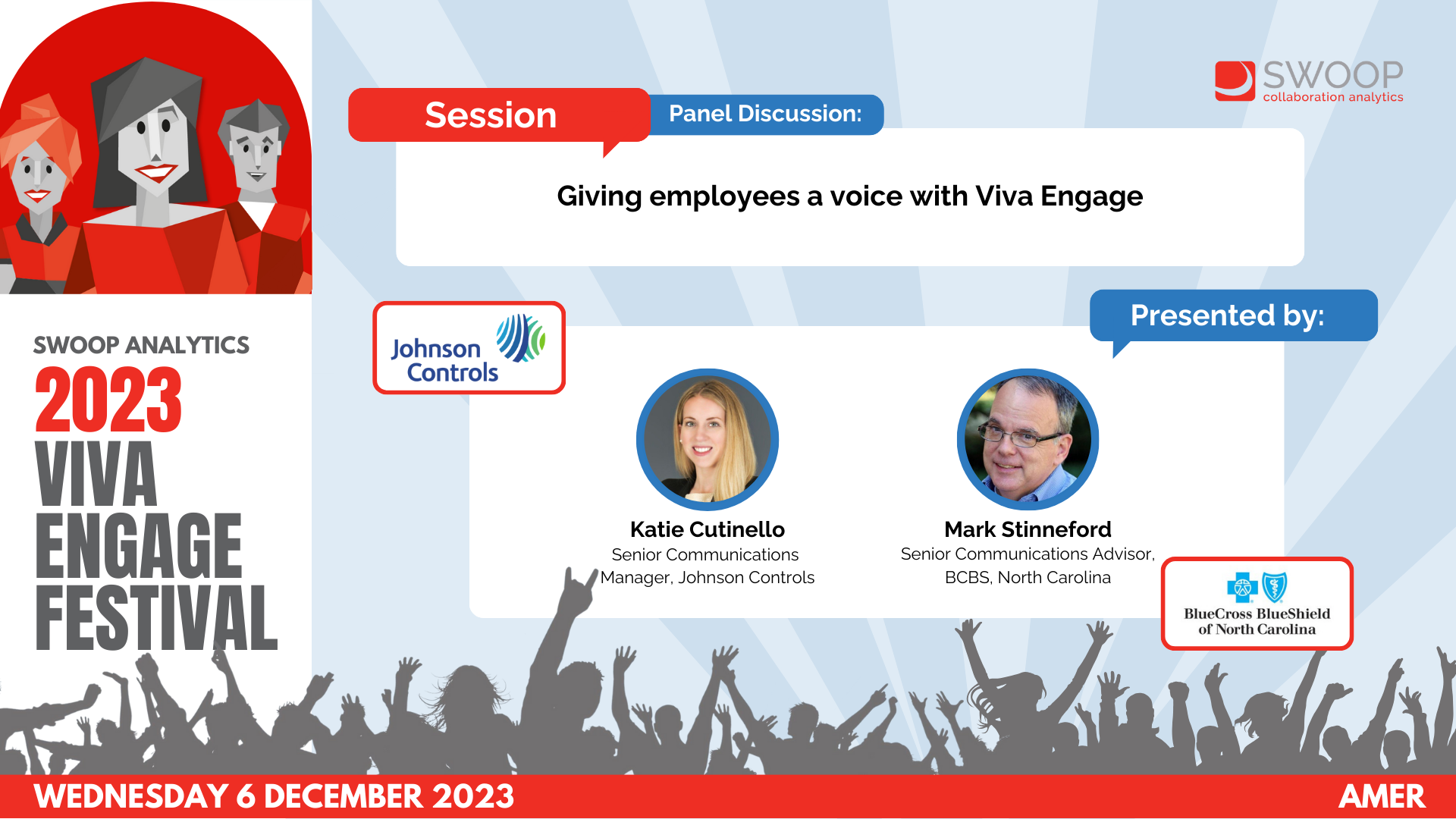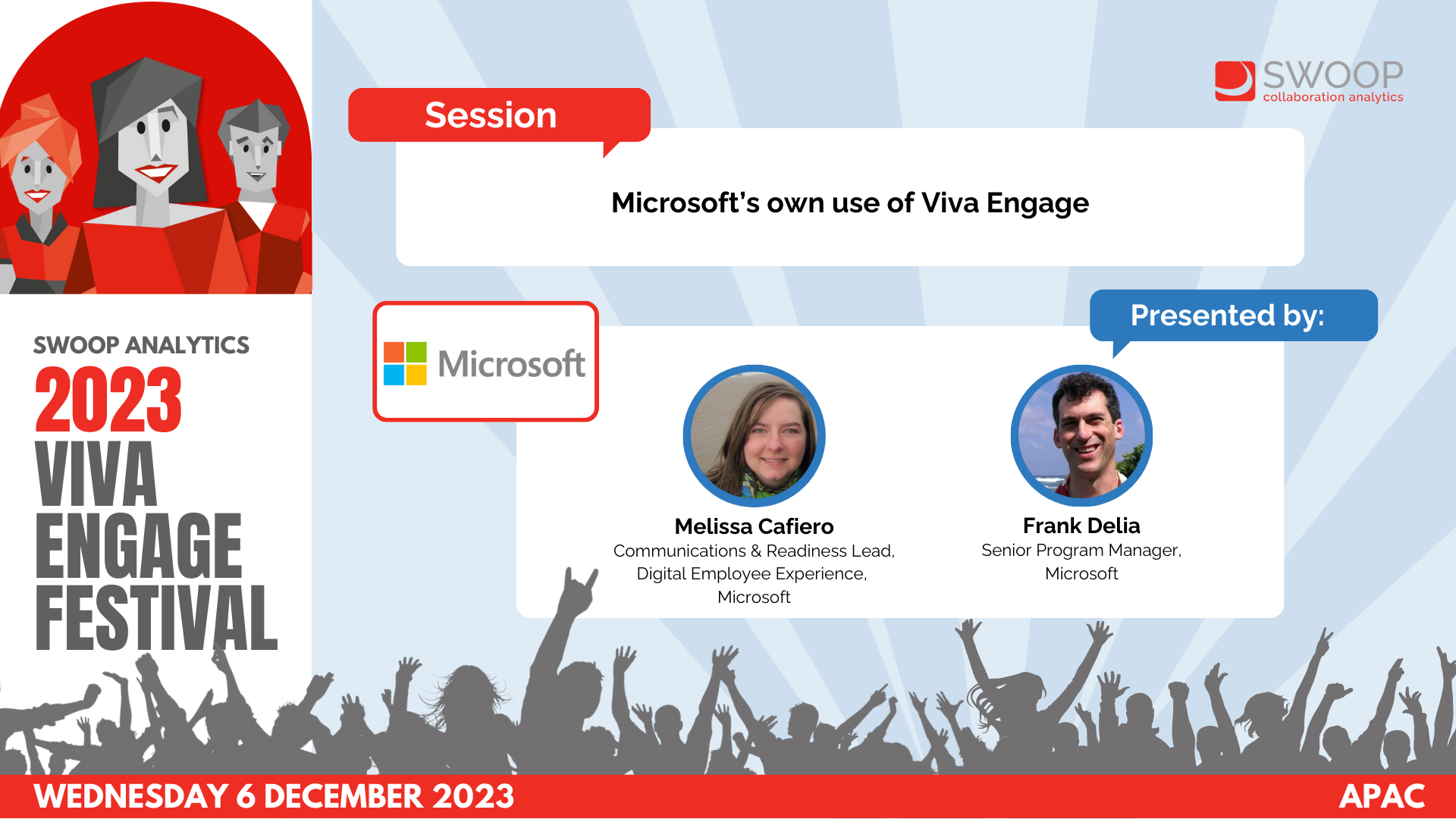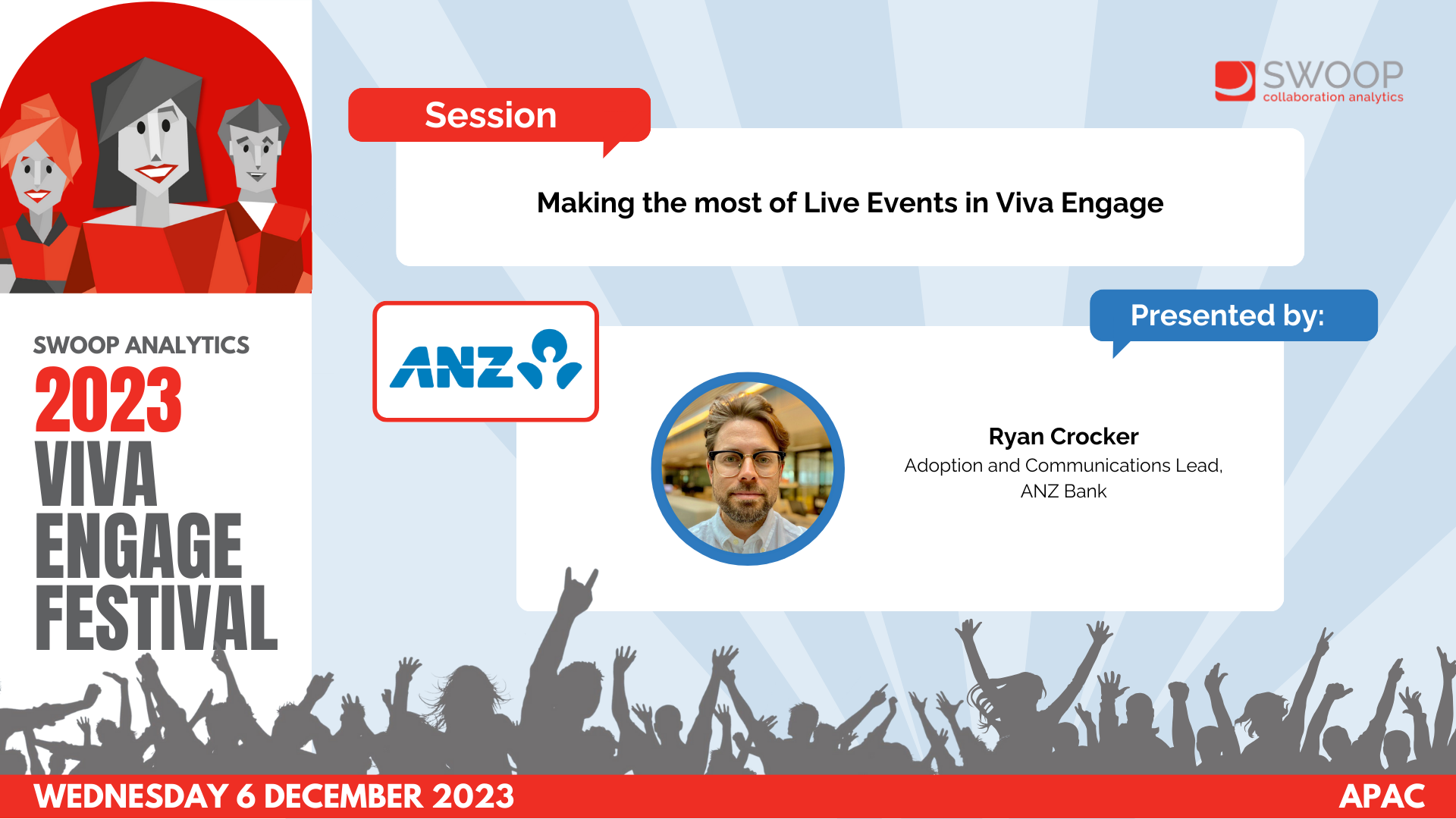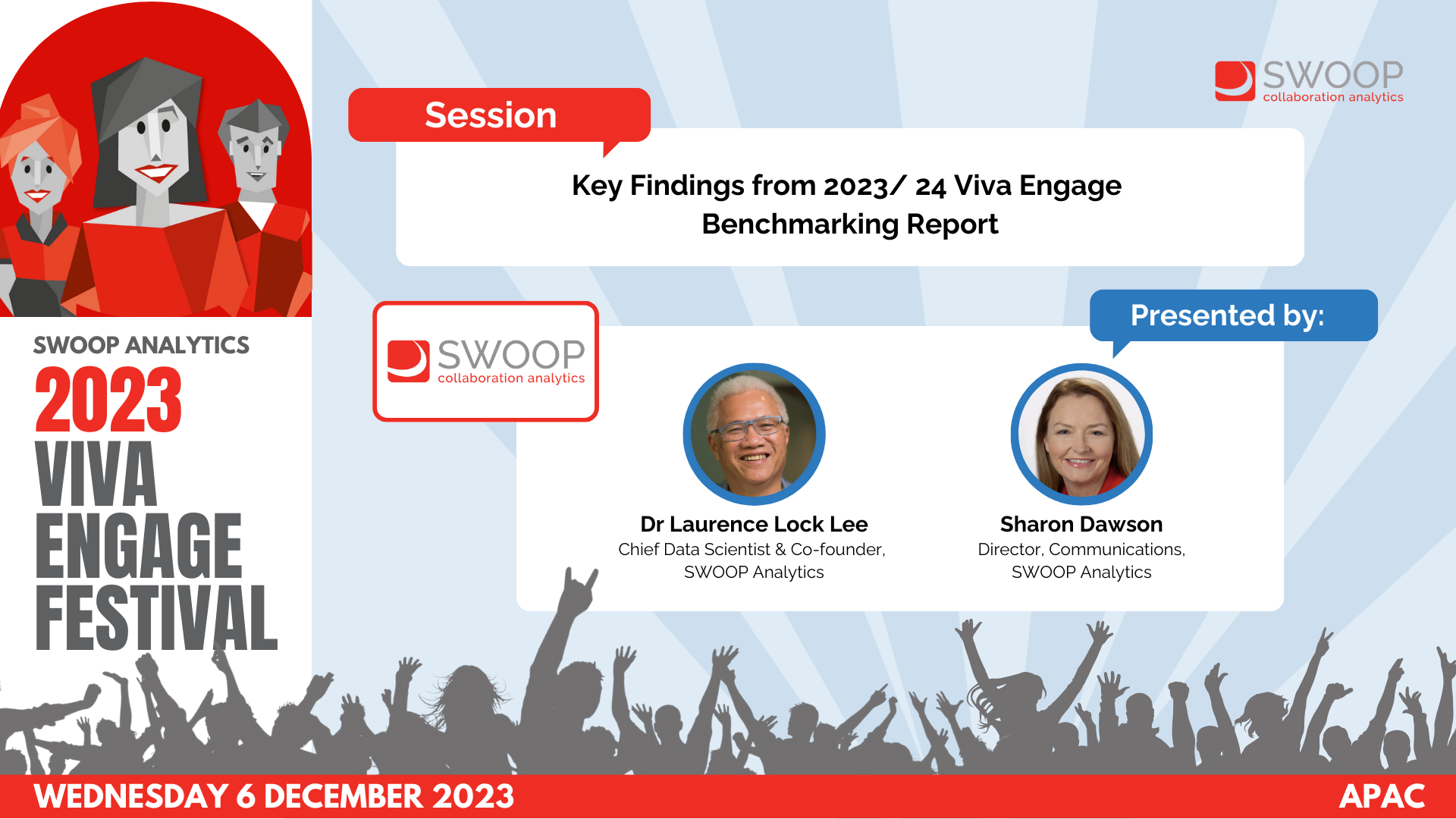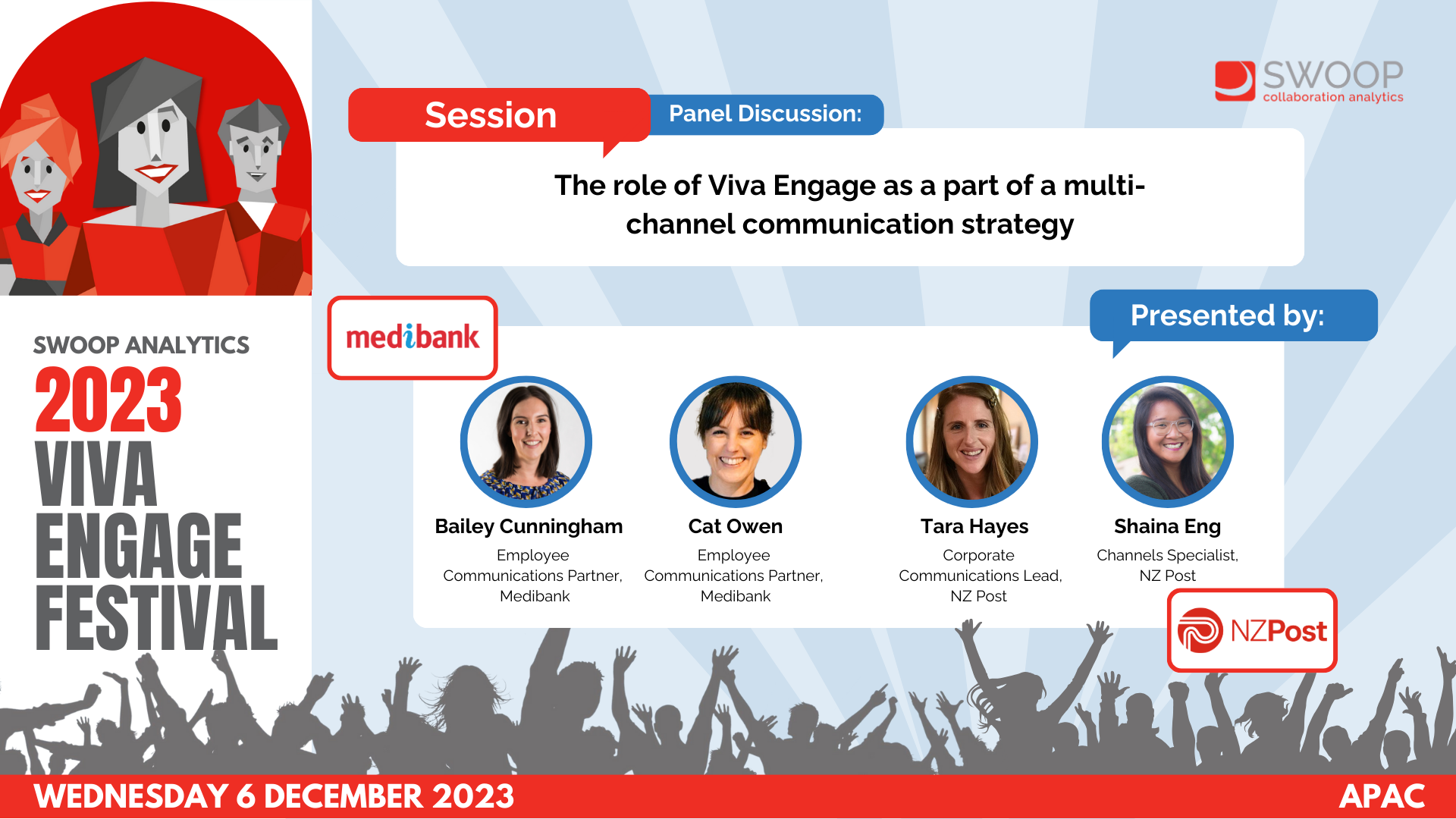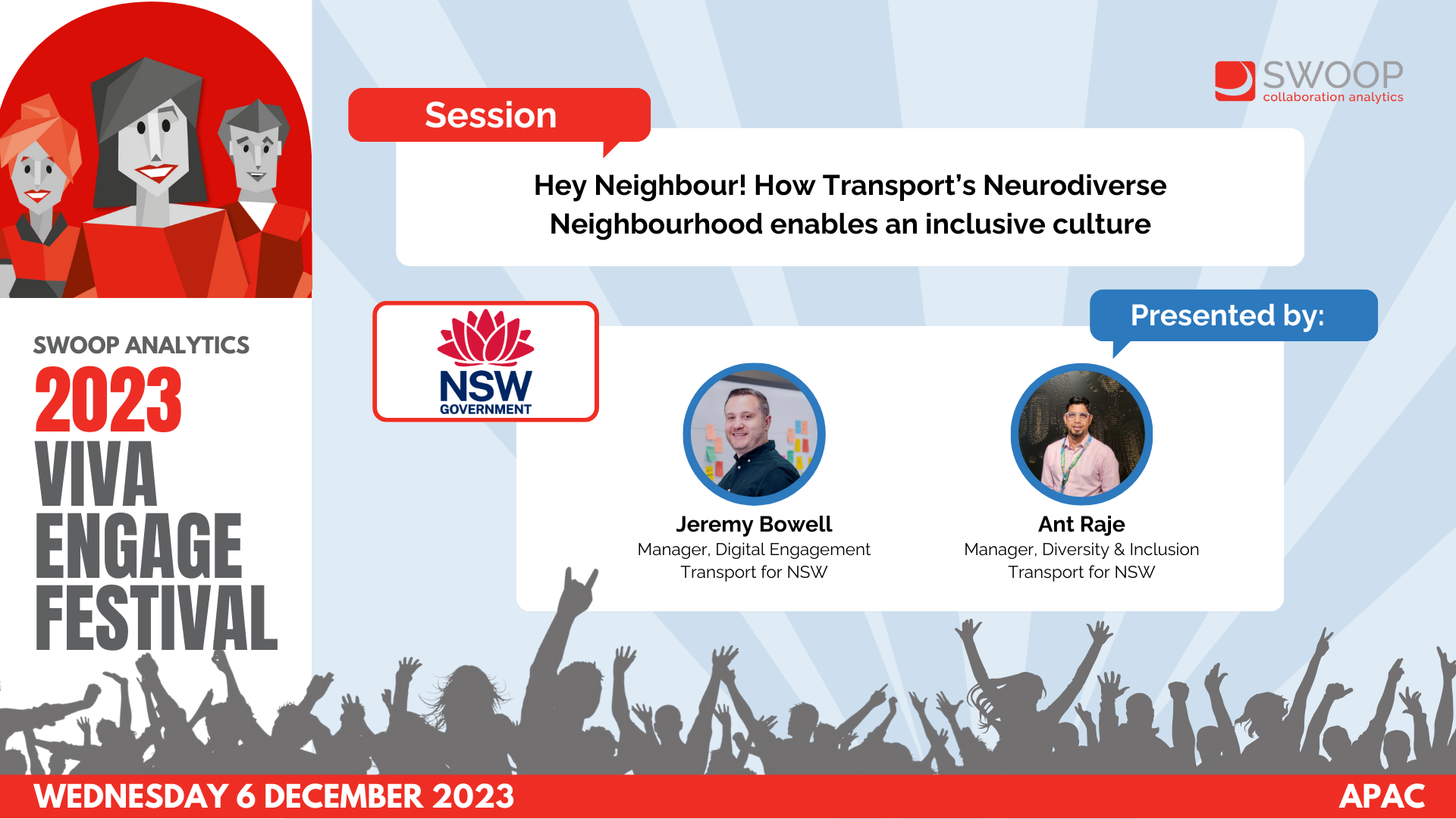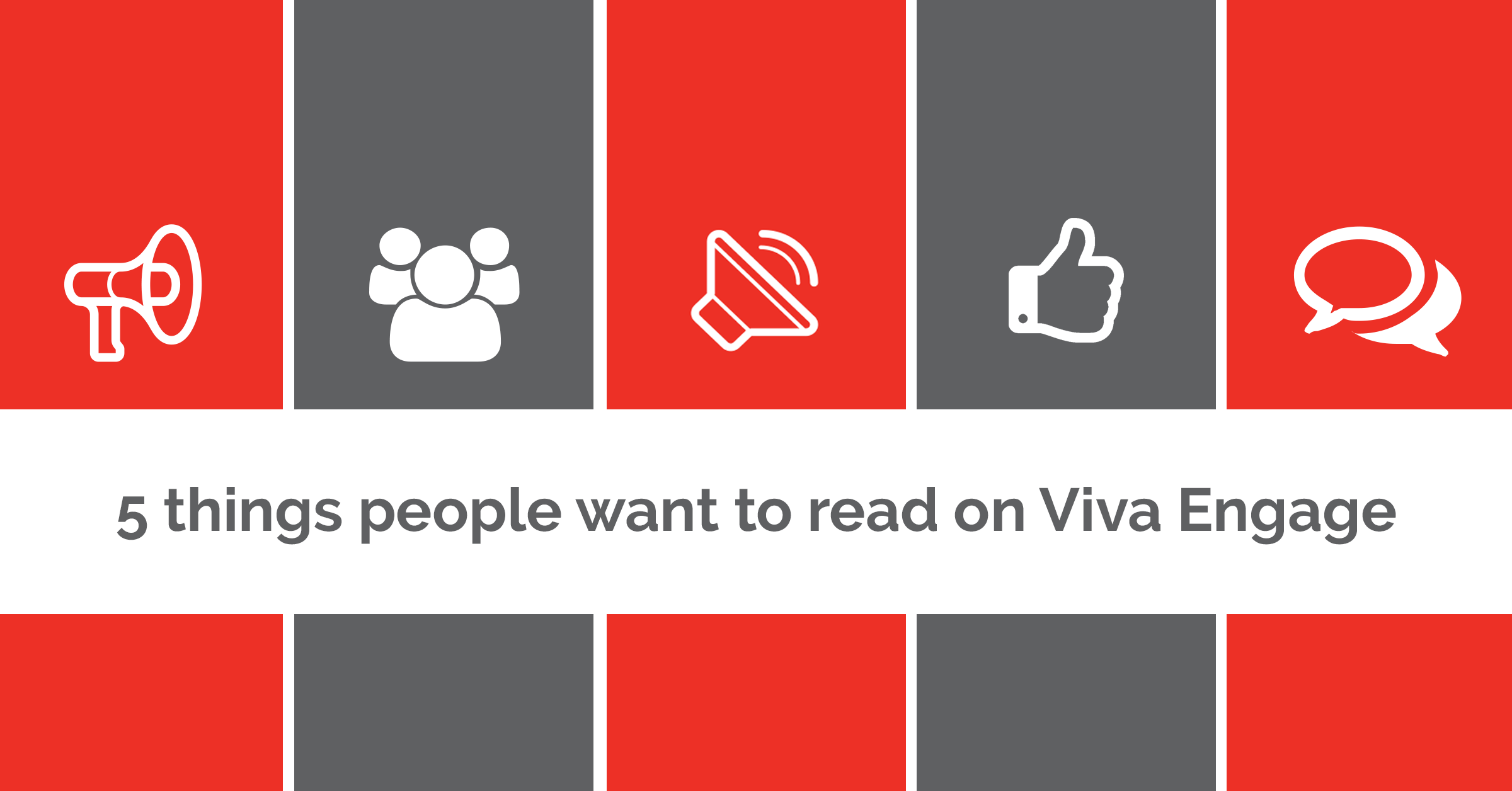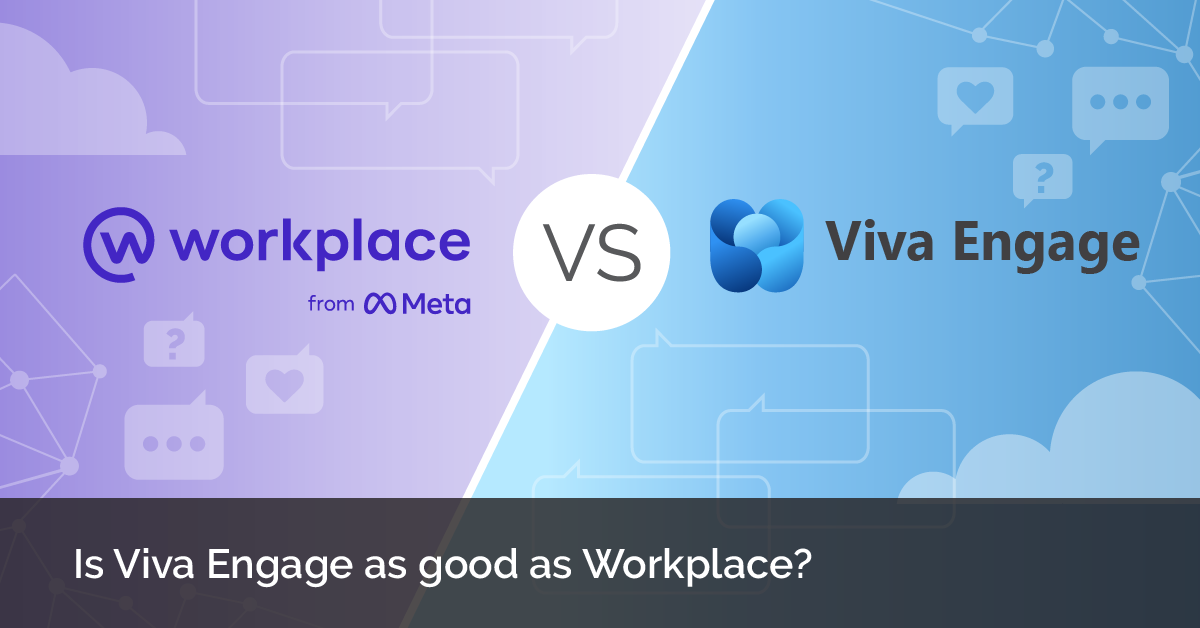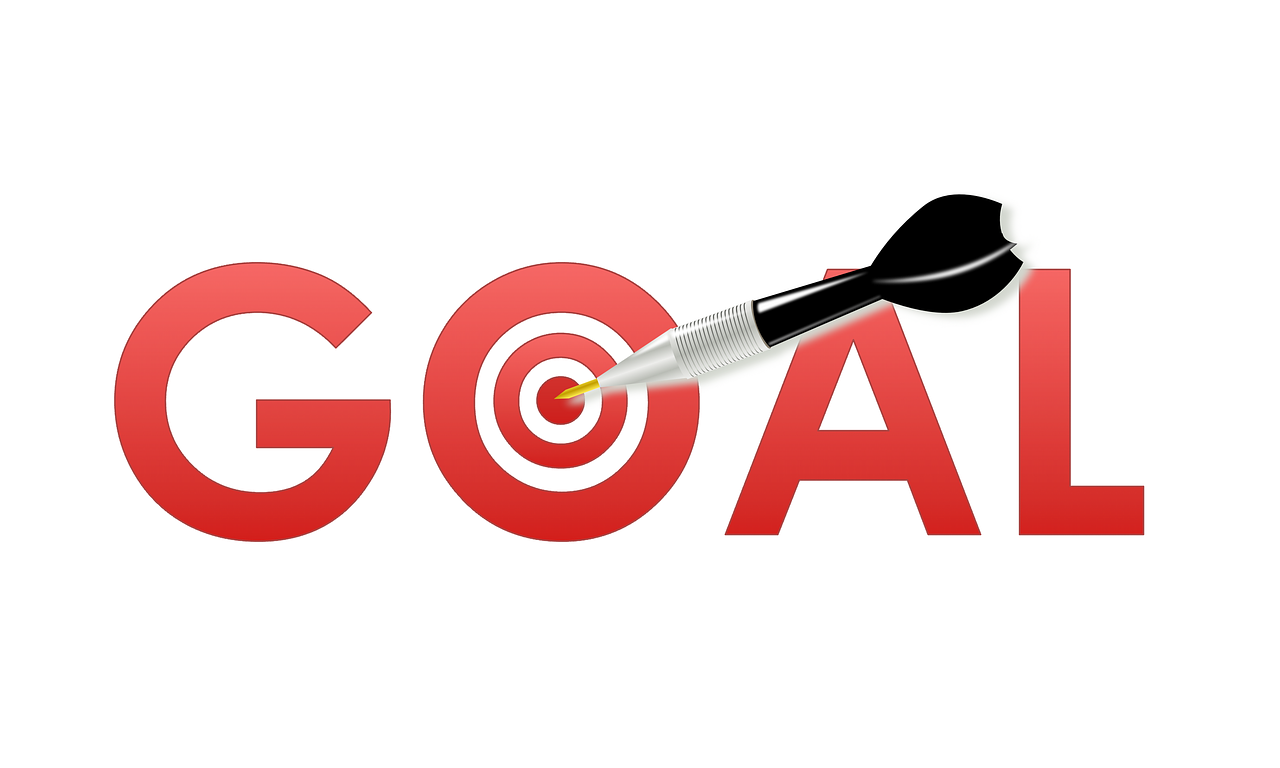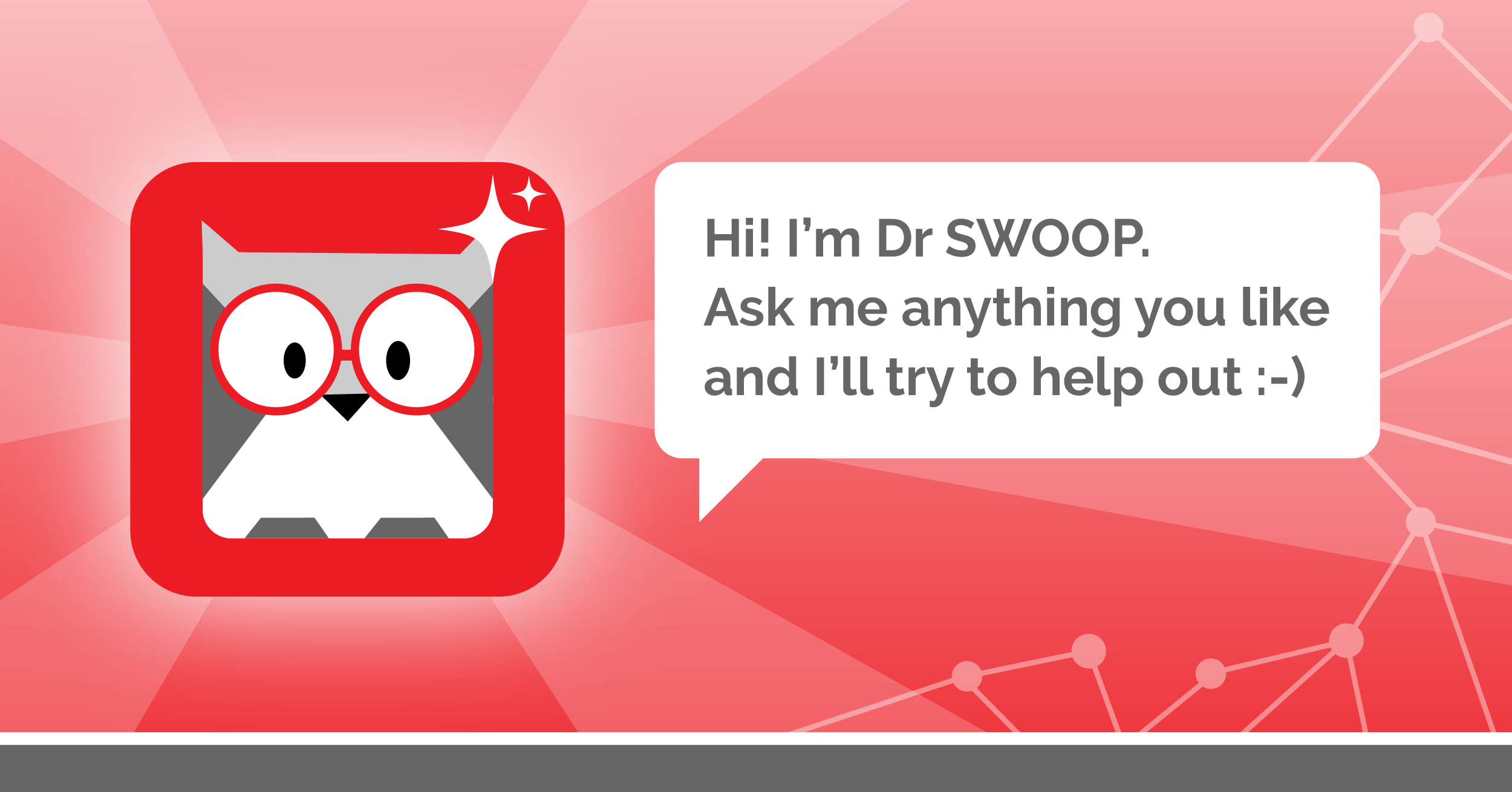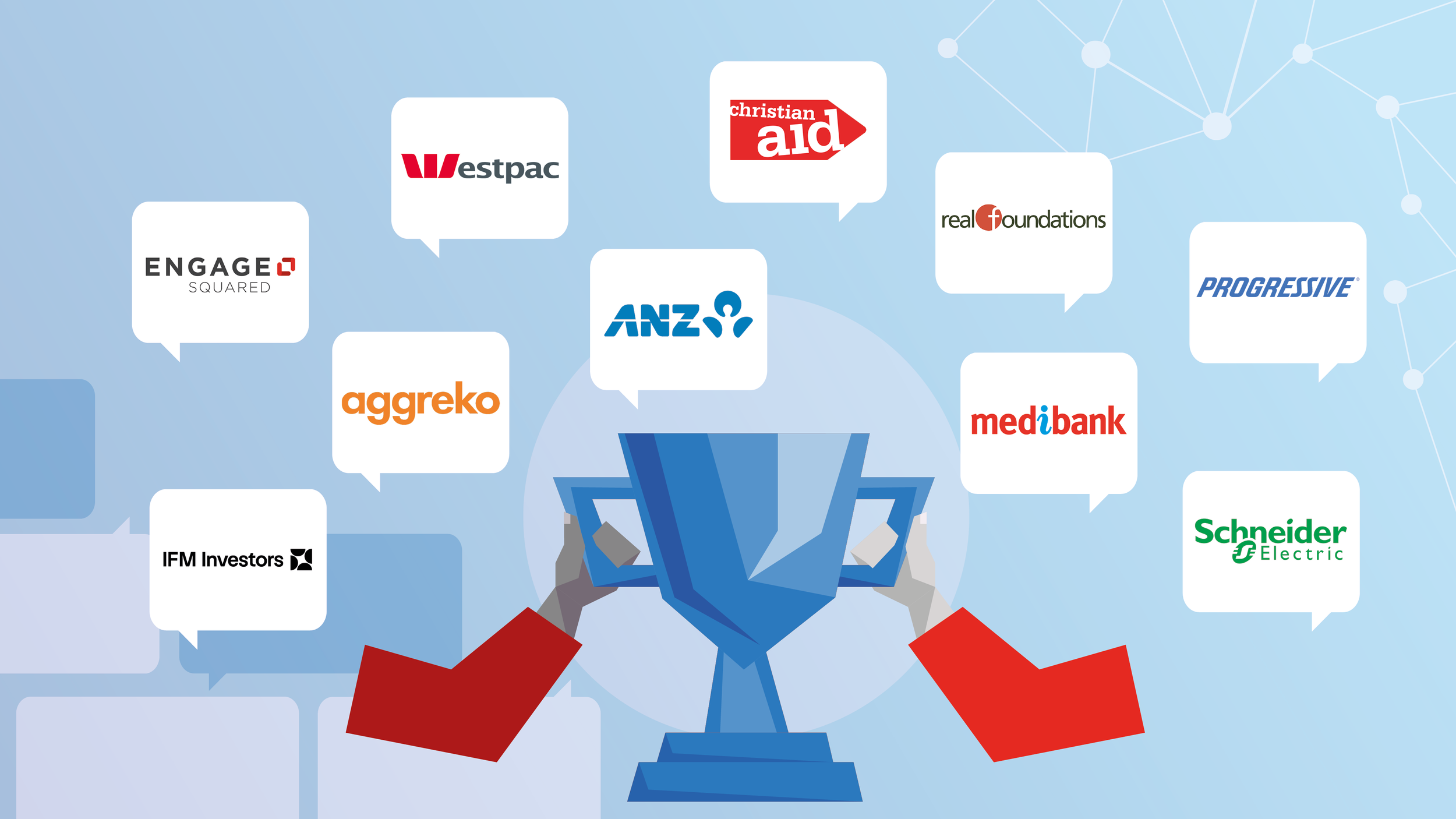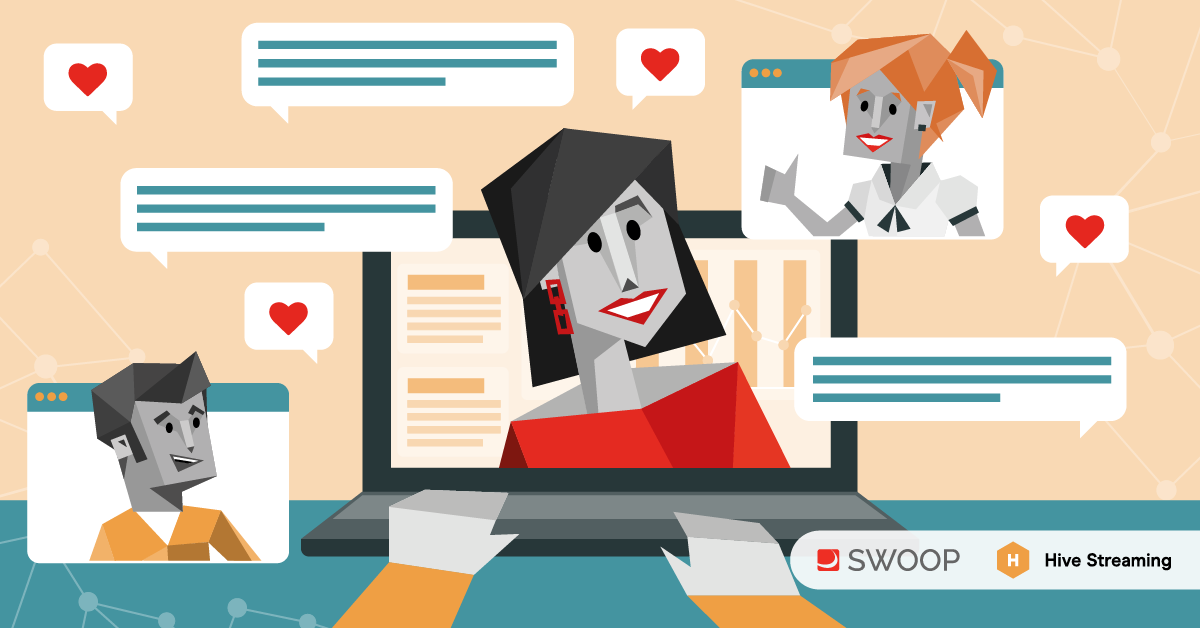Johnson & Johnson: Use internal social influencers at work and measure engagement on Viva Engage
AMER | Viva Engage Festival 2023
Learn how Johnson & Johnson use work Influencers in Viva Engage to deploy your change management plan and to measure its progress.
-
We are going to get ready for our next presenter, Laurence from Johnson & Johnson, again another great speaker, another great organisation and again great examples of how they are using Viva Engage internally. So Laurence is going to talk to us about engagement and social influencers at Johnson & Johnson.
Hello everyone, so I am happy to share with you today how we use internal influencers at work and how we measure the engagement on social media. So just a few words about me because we don't work together every day. So I work for Johnson & Johnson.
I've been working for 20 years, I just celebrated my 20 years at J&J. My job is customer insight and global innovation lead. So I do a lot of innovation, innovation culture, design thinking, design to value and product development.
I've also optimised processes but really the passion that I have, what I really love, what really gets me excited is people. I love people, I love working with people on site, remotely. Whenever there is a meeting, I feel I take it like an invitation.
I like to organise, to organise events around people. This is really my passion. So it's not surprising that I'm so interested by influencers and social media at work because this is an opportunity to meet many people, to engage constantly.
And so I wanted to share with you this passion that I have today. So what we will discuss today is why should we consider social media as a productivity tool, okay? And not just a tool where we, when we have something to share, we just put it. It's a lot more than that.
And it can be for you, it can become really your principal communication tool. What is interesting I think is that you don't need to teach the skill to people because they have it from home. I have a few numbers about social media and you will see that, you know, you don't need to teach people how to use it.
It measures the engagement very effectively. You really can see, can really understand what people think. And, you know, when the salesperson, what they want to know all the time, they want to know their client, okay? They want to know who they have to sell things to.
And when we do change management, when we work with people, what is very important is to understand what they think. And until social media, we really didn't have the right tool for that. We will also discuss about the opportunities, you know, how do you use influencers in a change management program and the successful recipe so you can have a plan that is sustainable.
So let's start by this. Let's start by, you know, we use how to use social media. So this is, you know, in many organizations, people continue to use email, emails to let others know what's happening.
And you really keep the social media when they do something, okay? And, but in some organizations, the social media becomes really the tool of communications. And, you know, this is a great tool where you directly connect with people wherever they are in the organization. They connect with you.
They understand what you like. You understand what they like. It's very casual.
And this is really a direct exchange. This networking communication model, because of this, because of this proximity with people, it's increased the collaboration. It increased the visibility of people because they are able to show many things, their passions about at home and at work.
You can share knowledge very quickly. And something that is really important, and for us this is very important, is it accelerates the decision making. When you are in a company that has more than 100,000 people, making a decision is becoming really a challenge.
And thanks to these tools, you can really reach out people and faster, and so you make decisions faster. So this is really a tool to consider. Now, I want to tell you something about the social media at home.
So I have these numbers that I think are incredible. Did you know that almost 5 billion people this year have, are using social media? And it continues to grow, which means that we haven't met yet the full potential of this tool. Americans, and I don't want to be like American-centric, but this is the number that I have, have an average of 7.1 accounts in social media by individual.
They spend more than two hours a day, okay? And now, talking about the influencers, the average salary on TikTok is $120,000 by individual. So you can really imagine that some people, those skills that they develop at home, they make it their profession, they make it their work, okay? Because they develop this passion and it becomes just natural for them. So when you understand this, how much people that are very busy at home, okay, most of the time, how much time they spend on social media, you can really think, okay, at work we have, well, at GNG we have Viva Engage, I continue to use Yammer as a name, I shouldn't, but difficult for me to go to Viva Engage, but we use this social media.
Between the question is, what do we do with the influencers at work? How do we use them? How can they use us? How can they be part of all the transformation that we are trying to do between the digitalization, innovation culture, the sustainability? There are many things where people need to change the way they think. How do we achieve this with the help of the influencers? I don't think we are really doing it today. And this is why I wanted to share with you, because there is an enormous potential, and you don't even have to train people, because they already know how to do.
So just before we, you know, I talk about influencers, but let's wait a second and let's discuss what is an influencer? It's really a new word, okay, a new activity. So the way, the definition of an influencer is someone that has the power to affect the purchasing decisions on others, okay? Because either of their authority, their knowledge, their position, or their relationship with the audience. And they are also following a distinct niche, okay, where they are very engaged.
So it's important to understand that these influencers, they have built a reputation for their knowledge and their expertise on a specific topic, and they share it, okay? They communicate of it, they communicate on it, and they become like famous about their interest and influence others to buy a product that they like. So the influencers, the way they are classified, and I'm not going to go deep into this, okay, it's just because I'm talking about this because I want to make the parallel between what happens at home and how, you know, who are the influencers at work. And so there are different types of influencers depending on the number of followers.
This is the way they are classified. The ones that have the biggest number of followers, you can use them for the awareness of your product, of all your ideas, or, you know, you can sell or share anything that you want. The influencers that have less followers, you use them more for the niche, okay, for a part of the product, a category.
Another way to classify the influencers is because some are celebrities, and very often celebrities are part of the mega-influencers, okay? They are going to touch everything. This is why they are used for the awareness. And you have key opinion leaders.
Key opinion leaders, they are more technical people. Usually they can be celebrities, but celebrities, people are more known because of another activity that they have, okay? And then they have a passion for something and they share it. The key opinion leaders, they are more expert.
They have an expertise and they become more famous. They have followers because of their expertise. So when you see these categories, you can really understand that at work, you have different influencers, naturally, okay? You have the influencers that are more the celebrities at work, okay? That are the ones that have top management, the people who have the budget, they have the power, they decide the strategy, and so naturally you are going to follow the top management, okay? But there are other categories of people that are more in the niche part that can become the internal key opinion leaders, if I can say that.
People who have a passion for something and they express it. Sometimes they create a group only about it, or they communicate on their passion on the group of someone else. But anyway, these people, some people, they have a lot of followers, or some people don't even know they can be followed, okay? But on Viva Engage, you can follow people, you follow the leaders, you follow the people, and so we have influencers at work.
How do we use them? So I'm going to tell you how I use them, and it doesn't mean that you should do the same, okay? This is up to you, but I can share with you what we do. So the influencers, they are not to be used by themselves, okay? I mean, this is not, there is not, you cannot say, oh, I'm going to do a campaign, I just use the influencers. The influencer, this is not an opportunity to have like, to create discussions about the topic, but you need to use other tools.
For example, we wanted to introduce a new strategy, so of course we have done like, we have done a website where we talk about our strategy. We had a high-level fun video to engage people, something to surprise people. In the sites, in the manufacturing site, we have put a QR code and a communication so people could easily have access to the website and be able to learn about it.
We have also created a submission box, so when there is, you know, we would express business problems and the employees would come and propose solutions. So we create a lot of discussions, and as you see, we use really new tools for the change management. I'm very surprised how people very often want to communicate about, let's say, like new strategies, like digitalization, and use old tools to communicate.
I mean, to my opinion, you lose a lot of credibility if you don't use new tools, okay? We have new tools if you want to, if you want to generate the engagement of people about the topic, you need to use tools that are going to excite them, okay? Surprise them a little bit. So now I'm going to share with you how you do it. So first, you need to understand what is the benchmark of engagement.
So most of the time it requires some time, okay, to interview people, understand what is their benchmark, because it's never called benchmark. So you need to ask, usually in a community, what is the time of the year where you have the biggest engagement in Viva Engage? So this is your benchmark. So what we choose is at Johnson & Johnson, we have the quality months in October.
So, you know, we choose that as a benchmark. This is where the people are the most engaged. I mean, the quality is the most engaged.
And you also need a baseline, okay? So the baseline, so the benchmark, you know, you see it's here. The baseline, you need to identify like a time where there is not like an average, okay, where you have an average engagement. And then you are going to monitor the different events of your campaign.
So we started to launch the website. So we saw, okay, that it was increasing. Then we launched a submission box where people would put their ideas.
So we saw that it didn't start very well. So we understood that we had to work more on the communication piece and the engagement. So let me show you.
So what you see, and in fact, we were using the SWOOP tool at this time, which is really, it's incredibly insightful, you know, that gives you an amount about like really many, many aspects of the social media communication. I'm not going to go into detail because I think you had today already a communication about this. But this is just to give you an idea how you do.
You put your benchmark, you put your baseline, and then you start to monitor. You can do it. You can do it with the numbers or you can use the SWOOP tool.
I mean, personally, I really prefer that where with the tool, you have a community health index and you don't have to go into the detail. You can see very quickly if your engagement is working or not. Let's go to the active influencers because the influencers, they are part of the people that create, okay, this engagement.
So they are part of them. So I didn't put the real names, of course, and the real pictures. But this is the right numbers.
This is what we had. And, of course, I wanted to keep the confidentiality. But what you can see at the benchmark, so we had, you can see at the benchmark, you can see people who are, they do like the one that has had engaged 131 person, okay, just in a week.
That's a big deal, okay. And so you can see after if you look at the baseline, very different people, of course, because people have an interest. So when there is something that's interesting for them, they communicate.
But then when there is nothing, they stop communicating. I mean, they are all humans, okay. They are also competitive priorities.
They have work to do. So we really talk about a passion that people have for the social media, where they spontaneously communicate. So another thing interesting.
So when you monitor, and I didn't, you know, this is just like to give you the flavor of it. So I'm not going into the detail, but you can see how, like newcomers arrive, depending on their interest, you can identify them. So you have people who are from the top management who communicate, you have people from the com, so this is their job.
But all the other people, most of the time, they do it because they have a passion, they want to be engaged. And so you identify the people, and you propose them, you say, listen, I need some volunteers. I see you have a passion for that.
Would you like to give some of your time and participate to the campaign? And so you identify volunteers, you work with them. Something very important, okay, is to reward the influencers. Of course, so at JNG, we have a system to reward people, we give points, okay, and they can buy, we can buy a gift, we can buy like different things.
But remember that at work, people crave for recognition. So a way also to reward them, in addition to a gift or money, is to talk about their performance. Okay, so I put, I removed the right picture, but this is like, again, numbers.
There was, you know, during the engagement, there was like 65, but this person, this individual did 65 posts, 65 posts, that's a big deal. 95 replies, more than 600 mention at 49% post reply, etc. So this is an opportunity to let know to the world that we have influencers and increase even more their visibility in their work.
So, you know, why it's so important to measure the engagement, okay, what does it bring you? But first, you can only improve what you can measure. So I have seen a lot of change management where we don't have really good measures or very precise measure. This is, I think, Viva Engage is really an opportunity to use a tool that gives you very detailed measures.
You identify the volunteers, okay, people who can work with you in your change management plan, or in your project. You generate numbers for your year-end performance, okay, in big companies at the end of the year, we all have, we need to prove that we performed well to get our bonus and others. And so this is an opportunity to show with numbers, how we have engaged people.
You understand the team dynamic, predict behavior, you can detect signal, but also, and for the influencers, this is an opportunity to develop them, to give them an opportunity to grow in their engagement with the company. So now, this is my last slide, I'm just going to share with you the recipe to do a campaign, okay, which includes, of course, the influencers. First, you need to define a purpose and a goal.
Identify your sponsor, the sponsor is very important, okay, because he's going to help you to open doors. You're going to have to build a campaign, a communication plan, so you select the tools, you prepare the contents, you need to put the timing in place. You need, we recommend that you do a posting plan, okay, what are you going to post, what are you and the influencers are going to post during the next 30 days.
So you can prepare yourself in advance. And a good idea is also to brand the community, if you can have a logo, if you can have like colors about your theme, etc. An option is to give to a cause, because you can increase the purpose and people feel more engaged if they feel that it is for the benefit of others.
You also want to build a team, and to build this team, make sure you identify a community maintenance lead, someone who's going to be in charge of your community, okay, to continue to prepare the feed and really make sure that things are progressing in the right way. Remember that you need champions because it really takes a village to succeed into a big transformation, so make sure you identify these change agents that are going to help you and contaminate others around you. Don't hesitate to do a training of Viva Engage, because I have noticed that people, they don't necessarily know the little things that are going to help to raise their voice on social media.
But you find trainings on LinkedIn Learning or on the website, I mean, there are plenty of trainings. Of course, identify the influencers, okay, and monitor the activity. As we said, make sure you have a benchmark, a baseline, and that you monitor during the campaign and after the campaign, okay, because you, ideally, you want that when you stop communicating or when you communicate less, people continue to talk about it.
You reward the influencers, we talked about that, you celebrate the success. That's important, okay, for people that they can see all that they have accomplished and you do a survey. Ideally, you do a survey to understand how it went, what can be done better, what they liked, what they didn't like, so you can prepare yourself for the next campaign.
So, you know, I really recommend you to put people first and really bring this energy that you can to your to your engagement team and use the influencers. If you have questions, don't hesitate to send me an email or give me a call, you can contact me also on LinkedIn. Thank you.



